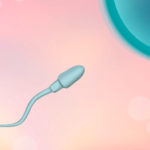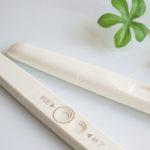Correlation of NIPT results with amniocentesis results①
(21, 18 and 13 trisomy)
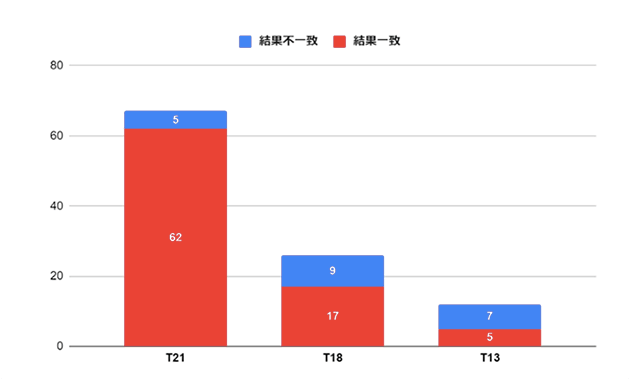
Of the 67 cases that underwent NIPT at the clinic and tested positive for 21 trisomy and proceeded to amniotic fluid testing, 62 were confirmed to have a 21 trisomy (positive result rate: 92.5%). (positive predictive rate 92.5 %).
Similarly, for 18 trisomy, out of 26 positive NIPT results, 17 confirmed diagnoses of 18 trisomy were made (positive predictive value: 65.5%). (positive predictive value 65.4 %).
For 13 trisomy, out of 12 positive NIPT results, there were 5 confirmed 13 trisomy. (positive predictive value 41.7 %)
Correlation of NIPT results with amniocentesis results②
(RAA)
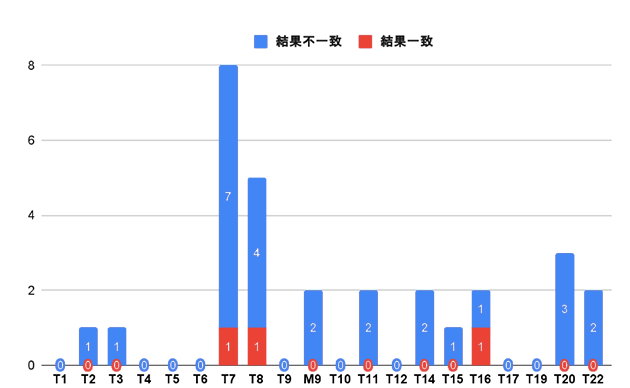
Of the positive NIPT results other than 21, 18 and 13 trisomy, 7, 8 and 16 trisomy were confirmed for the same disease on amniocentesis.
It is important to note that NIPT is a screening test and that the positive predictive value depends on the prevalence of the disease. In general, the lower the number of people with the disease in the overall population, the lower the positive predictive value.
This is why NIPT, which is considered to have high sensitivity and specificity, has a low positive predictive value: 21 trisomy is the most prevalent disease in medicine today, and the prevalence rate decreases with 18 trisomy, 13 trisomy and other aneuploidies.
Correlation of NIPT results with amniocentesis results③
(SCA)
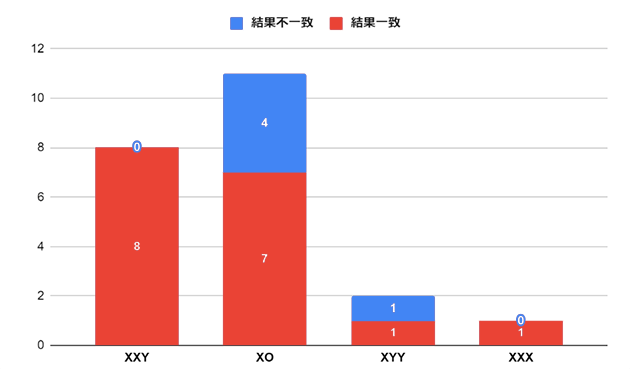
For sex chromosomes, the overall population data is still small, but positive predictive values of 100% for XXY, 63.6% for XO, 50% for XYY and 100% for XXX have been obtained.
Correlation of NIPT results with amniocentesis results④
(Structural abnormality)
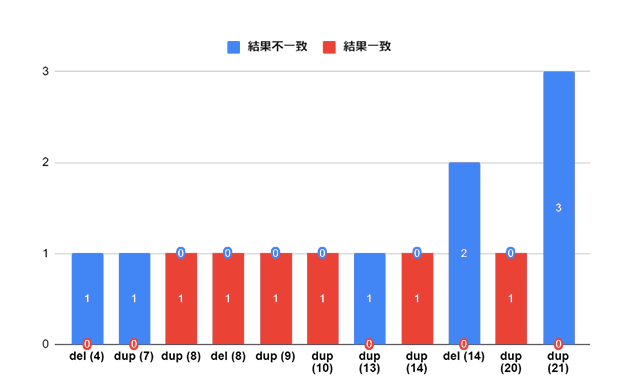
For structural abnormalities, the data population is also small, but several diseases have been definitively diagnosed in amniotic fluid tests.
‘Positive results for low-prevalence and rare diseases without missing them’ – this is an important performance in screening tests.
Let’s replace this with a common screening test. Imagine a cancer screening test. Many people are tested, but only a handful of them actually have cancer, so the positive predictive value is quite low.
Isn’t it more important not to miss the handful who should go on to a full screening than to have a high positive predictive value? This relationship between cancer screening and a thorough examination is the relationship between NIPT and a definitive test (e.g. amniotic fluid test).
What is an outcome discrepancy?
- For discrepancies between NIPT results and amniocentesis (definitive diagnosis) results, all are NIPT false positives (as of 10 February 2023)
- Almost all of the discrepancies between NIPT results and birth outcomes are strictly difficult to prove a link with NIPT results
- The information obtained from the postnatal questionnaire includes a mixture of diseases and abnormalities that are not due to chromosomal abnormalities, and there is no way of confirming chromosomal abnormalities
- This can be a powerful decision-making tool with regard to gender discrepancies. To date, three gender discrepancies have been reported


